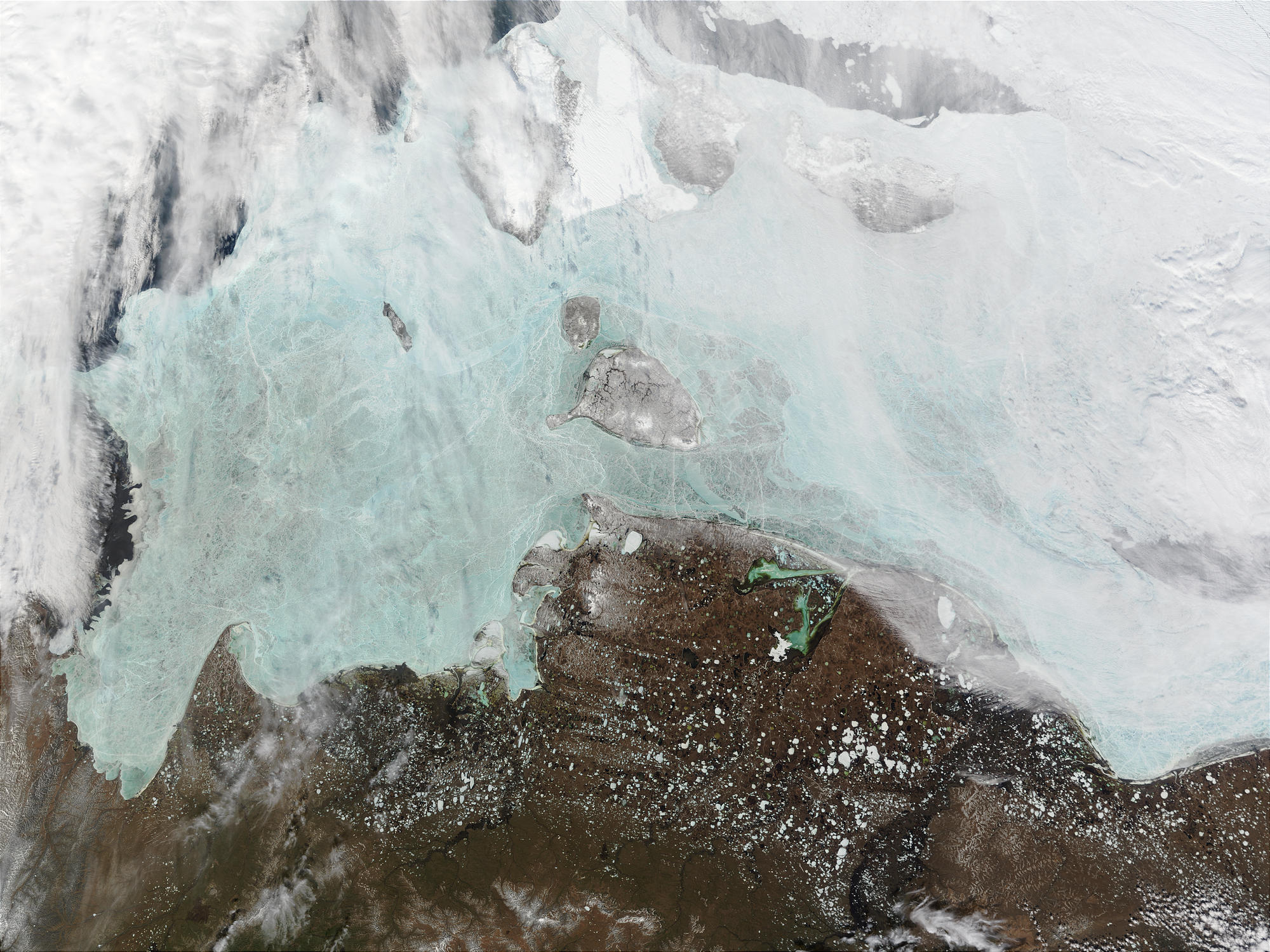Russia’s East Siberian Sea is the most dangerous for Arctic shipping
But all five seas along the Northern Sea Route are relatively safe compared to other major shipping areas.

The risk for ship accidents varies across the Arctic waters of the Northern Sea Route and a recent study found the East Siberian Sea to be most the dangerous.
Ships traveling in the East Siberian Sea, which is bounded by the Laptev Sea and New Siberian Islands on the West and the Chukchi Sea and Wrangel Island on East, run the highest risk of ship collision, sinking or running aground, mostly because of more severe ice conditions, such as the earlier and quicker build-up of ice at the end of summer.
Winters are especially cold in the area, with the mean temperature at -30 degrees C and complete sea ice coverage. Even during summer, 50 percent of the ice cover remains, which is in stark contrast to, for example, the Barents Sea, which is completely ice-free during the summer.
Furthermore, the East Siberian Sea is the shallowest of the seas along Russia’s Northern Sea Route, with a mean depth of just 52 meters.
In contrast, the Barents Sea has the lowest probability among Arctic seas for ship collision and foundering events. However, foundering probabilities are very low in all five areas. The Chukchi, Laptev, Kara, and Barents Seas have almost similar probabilities regarding grounding. The study’s authors also found that overall, accidents on the NSR are rare in comparison with other maritime regions.
Arctic shipping increasingly at the center of attention
The study sees Arctic shipping increasingly on top of political agendas due to the Arctic Ocean’s natural resources, its shorter navigational routes, and Arctic seas being a pirate-free zone. However, due to potential dangers caused by the cold and harsh environment, it is vital to identify the future risk of ship accidents with regards to the increase in ship traffic in the region.
The authors used a case study of an oil-tanker navigating the Northern Sea Route. Furthermore, three different accident scenarios were included that are likely to occur during Arctic voyages, namely ship collision, foundering (sinking), and grounding. “Ship collisions may occur due to a ship’s collision with floating ice or an iceberg or a ship colliding with an escorting icebreaker,” Rouzbeh Abbassi from the School of Engineering, Faculty of Science and Engineering, Macquarie University in Sydney, Australia and one of the study’s authors told High North News.
The study focused on the Northern Sea Route, which is touted as a potential new trade route connecting major Asian and European ports, but at the same time, it is afflicted with extreme temperatures, pack ice, multi-year sea ice effect, and severe climatic changes.
The researchers looked more closely at the five seas along the NSR, i.e. the Barents, Kara, Laptev, East Siberian, and Chukchi Seas, taking into account the different environmental and operational conditions in these areas, ranging from pack ice effect, environmental obstacles, the combined effect of wind and wave, to emergency assistance.
New risk model
The paper proposes a new risk model, shedding light on the causes of shipping accidents on the NSR to quantify the risk of transit on Arctic routes. “The basic idea of this model is to estimate the risk associated with marine transportation in Arctic waters considering operational and environmental factors particular to this region”, Abbassi told HNN.
The innovative aspect of the model is that is has been developed by having up-to-date real field data for different wave states and wind speed based on recorded data from Arctic weather stations.
“The model thus has the capacity to be updated anytime with newly provided data based on observation of existing environmental and operational factors, and hence will provide a more precise estimation of the risk associated with the voyages,” Abbassi explains.
Previously, no risk study had divided the NSR into different regions. In contrast, the new study can take into account the environmental differences between various marine areas along the NSR.
Why ship accidents happen
There are different operational and environmental factors that affect shipping operations. Operational factors encompass human error such as human fatigue, lack of technical knowledge of ship systems, poor communication, faulty policies, practices, and standards, or navigation failures. Other factors include tug assistance failure, fault of the vessel itself, for example loss of power in the danger area, or loss of propulsion of the vessel.
Environmental factors causing ship accidents include wave height, wind speed, sea current, surrounding temperature, harsh weather effect, and different levels of ice along the NSR route. Ice, such as pack-ice and non-detected multi-layer ice, has been found to be a dominant factor in causing accidents. Combinations of these factors are also important; wind speed and pack ice together can make for dangerous icing conditions.
The authors conclude that early warning capabilities that would allow shippers to take appropriate preventive and mitigation measures are crucial to enhance the overall safety of shipping operations.
“On the basis of our research, policy-makers can narrow down major risk factors that may affect navigation in Arctic waters”, Abbassi said. “To mitigate the risk associated with marine transportation in Arctic waters, management professionals can emphasizes higher training and better technical knowledge to prepare ships for Arctic voyages.”
The study can also help preparing for varying conditions in different geographical locations along the NSR.
“Our study revealed that the East Siberian Sea is more prone to all three types of accidents. Therefore, here is a region to which policy-makers can place more attention,” Abbassi concludes.